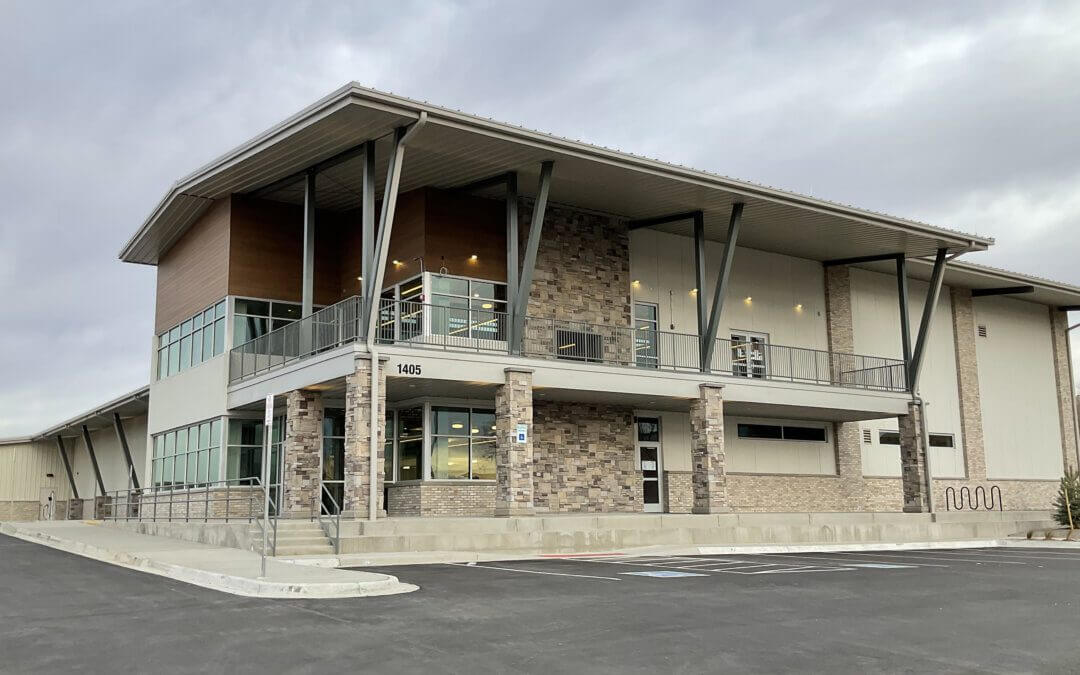Sustainability is an important element to consider when designing and constructing a new building. Contrary to conventional building materials, metal building systems offer a more sustainable choice for construction and the option to recycle materials at the end of a building’s usable life. Steel is the only material used in construction that is nearly 100% recyclable, leaving no steel waste at a construction site. Also, steel buildings are almost half the weight of a comparable wooden structure because steel has a higher strength-to-weight ratio than wood. This makes steel buildings stronger and more durable than wood, brick, or concrete, despite their light weight.
As more and more companies are choosing to consciously build with practices that meet today’s needs without compromising future generations’ needs, building with steel is becoming increasingly desirable for customers across many markets and industries. Metal Building cradle-to-grave lifetime impact can be analyzed using an MBMA sponsored Lifecycle assessment calculation prior to construction to compare construction methods.
Here are 4 reasons why metal buildings are the right choice for a sustainable future:
1) Durability
Steel buildings are a smart short-term and long-term investment. Steel offers superior durability you can count on. Compared to customary building materials, it’s more resistant to damage from high winds, heavy snowfall, seismic activity and fire. This contributes to low-maintenance performance over the life of your metal building. The lengthy lifespan of steel buildings helps reduce usage of raw materials that are used to construct new buildings and maintain existing facilities.
Steel buildings are also resistant to mold and mildew. Once your metal building is constructed, it won’t require any unique treatments to prevent mold, decay, or to protect it from insects. Steel doesn’t absorb moisture, so it won’t play host to any bacteria that can be harmful to the occupants of the building.
2) Sustainability
By definition, sustainability means the ability to be maintained at a certain rate or level, or the avoidance of the depletion of natural resources in order to maintain an ecological balance. Choosing products throughout construction that are good for the environment are increasingly top of mind for customers throughout the country, becoming essential for modern society. When customers are considering the carbon footprint of their project, building with steel meets their needs.
Building with steel is also sustainable from a construction perspective, as most of the fabrication and assembly is off-site and reduces construction equipment emissions, on-site labor and construction waste. In addition, leftover material in steel construction is recyclable, rather than job-site waste making its way to landfills in conventional building materials.
3) Recyclability
Metal building systems are one of the most environmentally friendly options available on the market. As a product, metal buildings are environmentally friendly as most are made from recycled steel. In addition, they produce a low carbon footprint—the total greenhouse gas emissions caused by a particular person, group, etc. In the current environment, as many customers are pledging to be carbon neutral by 2030, choosing a metal building supply for material allows customers to best meet these goals.
During the bidding or building award process, potential customers are increasingly inquiring about what happens to a building if it were to be torn down at the end of its usable life. Metal buildings are 100% recyclable—likely ending right back at a steel mill and recycled into new steel products, including new cars, appliances, buildings, and bridges. In fact, there is no limit to the number of times steel may be recycled. Most metal buildings contain a high content of recycled steel and are made with steel on its second or third life cycle, without losing its strength and durability.
4) Energy Efficient
Steel buildings are an energy-efficient option that can help earn points toward various green building certifications including LEED and the Declare certifications. They’re designed to accommodate high-performance insulation that can help maintain consistent interior temperature and reduce energy usage over time.
Choosing cool metal roofing colors can also help reduce energy usage by reflecting the sun’s heat back into the atmosphere instead of absorbing it into the interior of the building, taking the load off of your air conditioner and reducing energy use. This can also decrease heating and cooling costs over time. Metal buildings also offer countless opportunities to incorporate features such as green roofs, solar heating, and insulation systems which all help contribute to LEED points. Furthermore, potential customers will expect to see environmental product declarations (EPDs) for products utilized in their projects. Selecting a metal building supplier that understands these unique elements of green buildings is essential.
Chief Buildings began designing metal building solutions in 1966 for applications in manufacturing, commercial, community, and agricultural buildings. 100% of their steel can be American-made and meets all quality standards. Choosing your partner as a metal building supplier can make all the difference in meeting your customers’ needs for a sustainable future. To find out more about metal building systems that can help your next custom-designed building be more sustainable, contact Chief Buildings at 800-845-1767.

